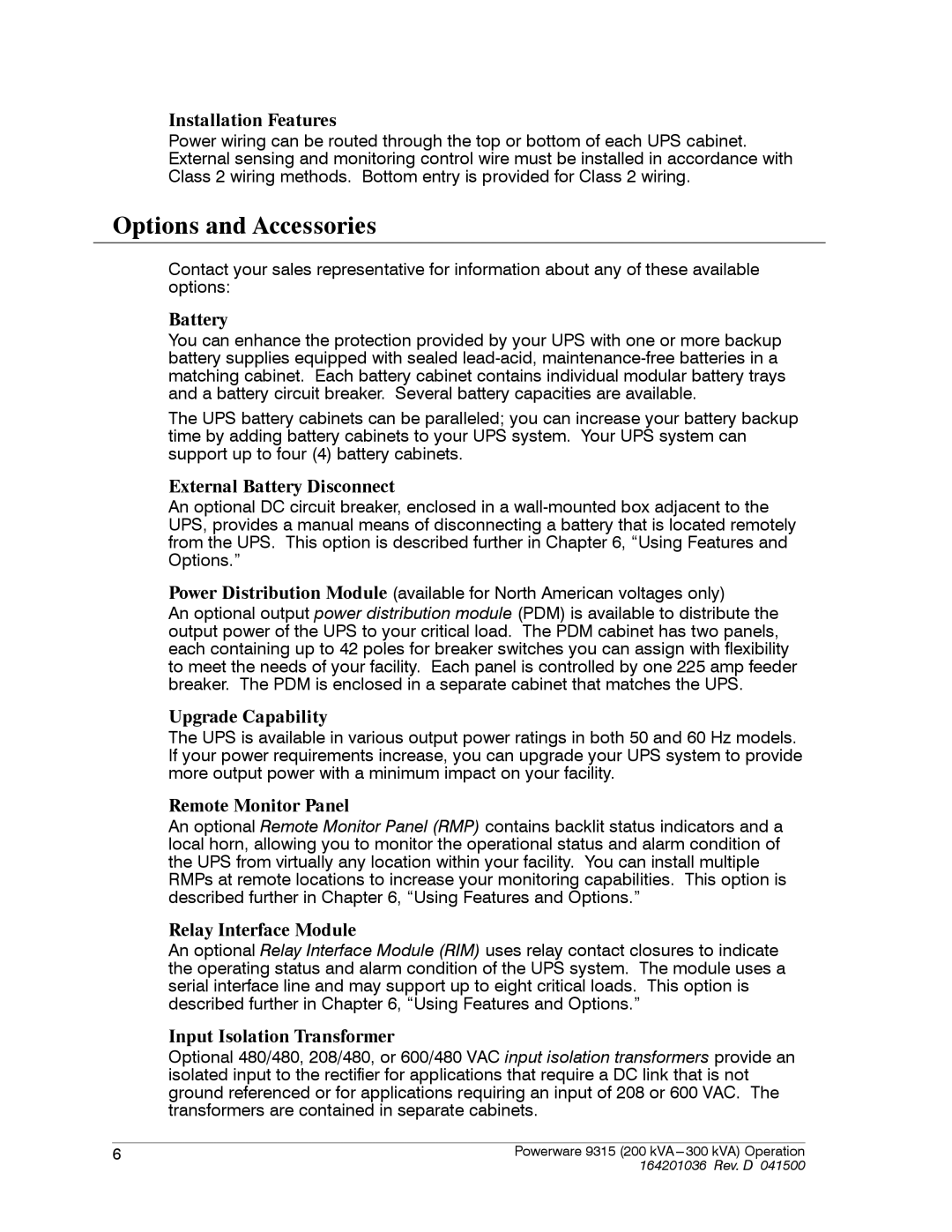Installation Features
Power wiring can be routed through the top or bottom of each UPS cabinet. External sensing and monitoring control wire must be installed in accordance with Class 2 wiring methods. Bottom entry is provided for Class 2 wiring.
Options and Accessories
Contact your sales representative for information about any of these available options:
Battery
You can enhance the protection provided by your UPS with one or more backup battery supplies equipped with sealed
The UPS battery cabinets can be paralleled; you can increase your battery backup time by adding battery cabinets to your UPS system. Your UPS system can support up to four (4) battery cabinets.
External Battery Disconnect
An optional DC circuit breaker, enclosed in a
Power Distribution Module (available for North American voltages only)
An optional output power distribution module (PDM) is available to distribute the output power of the UPS to your critical load. The PDM cabinet has two panels, each containing up to 42 poles for breaker switches you can assign with flexibility to meet the needs of your facility. Each panel is controlled by one 225 amp feeder breaker. The PDM is enclosed in a separate cabinet that matches the UPS.
Upgrade Capability
The UPS is available in various output power ratings in both 50 and 60 Hz models. If your power requirements increase, you can upgrade your UPS system to provide more output power with a minimum impact on your facility.
Remote Monitor Panel
An optional Remote Monitor Panel (RMP) contains backlit status indicators and a local horn, allowing you to monitor the operational status and alarm condition of the UPS from virtually any location within your facility. You can install multiple RMPs at remote locations to increase your monitoring capabilities. This option is described further in Chapter 6, “Using Features and Options.”
Relay Interface Module
An optional Relay Interface Module (RIM) uses relay contact closures to indicate the operating status and alarm condition of the UPS system. The module uses a serial interface line and may support up to eight critical loads. This option is described further in Chapter 6, “Using Features and Options.”
Input Isolation Transformer
Optional 480/480, 208/480, or 600/480 VAC input isolation transformers provide an isolated input to the rectifier for applications that require a DC link that is not ground referenced or for applications requiring an input of 208 or 600 VAC. The transformers are contained in separate cabinets.
6 | Powerware 9315 (200 kVA |
|
| 164201036 Rev. D 041500 | |
